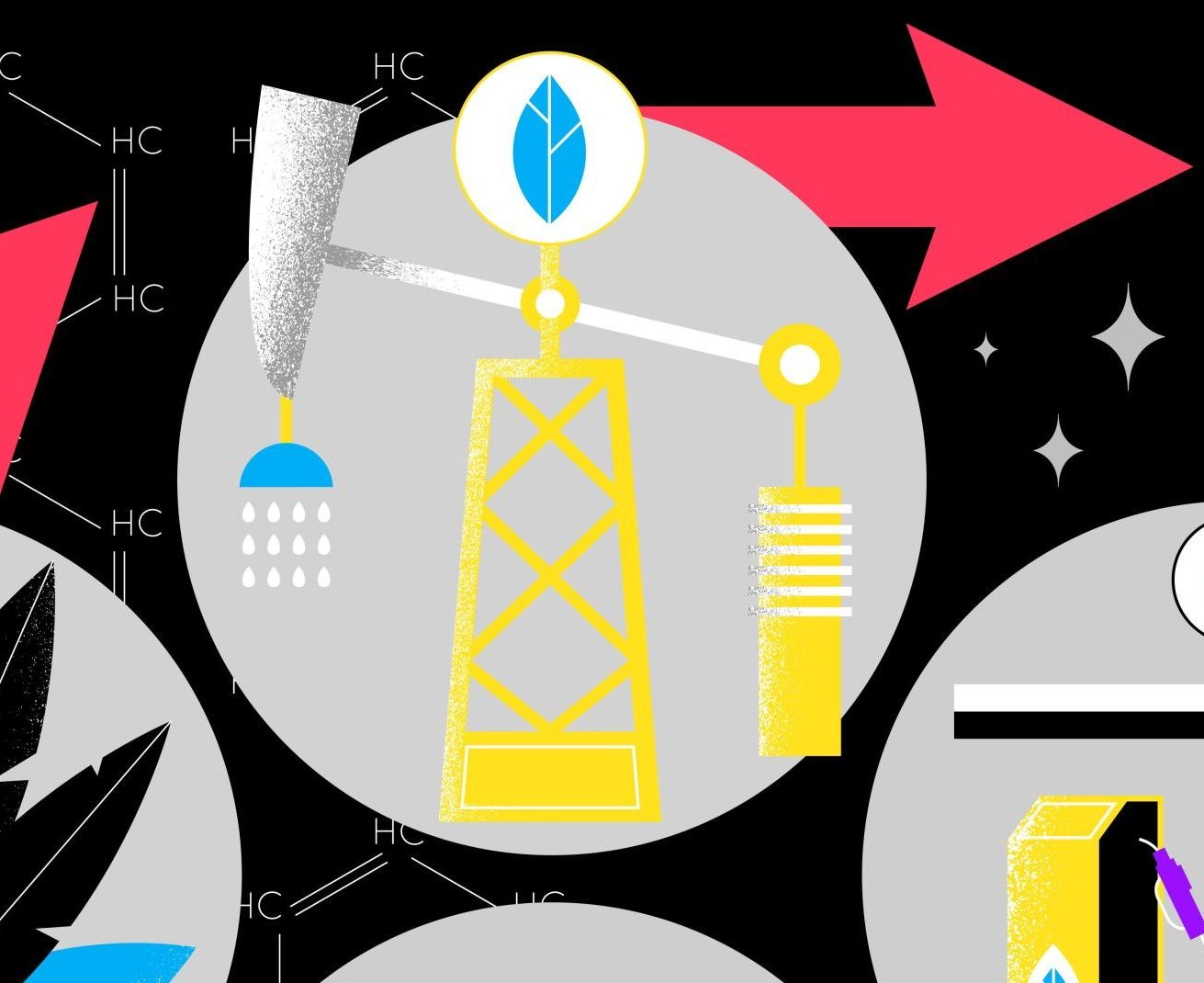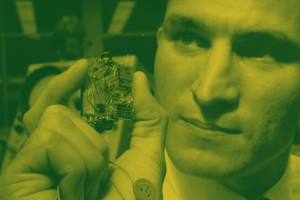How Technology Affects Traditional Social Practice...
Gadget interaction, digital surfing, and the "membrane principle"

Fuel can be made from any organic material. Modern energy systems rely on several primary energy sources. Oil is the most consumed energy resource, followed by coal, and natural gas is third. By 2040, natural gas consumption is expected to surpass coal, as natural gas is considered more environmentally friendly—at least at the point of use, not extraction. After these, primary energy sources like hydropower, nuclear energy, bioenergy, and renewable energy come into play.
Inorganic materials can also serve as fuel. The growing number of road vehicles drives the need for eco-friendly energy sources, leading to increased exhaust emissions. Additionally, robots will soon become an integral part of daily life and need power. Due to the emissions, robots operating indoors cannot use internal combustion engines.
What are the existing solutions? On the one hand, we have hydrogen fuel, where hydrogen is used as an energy carrier; on the other, we have battery technologies. The main challenge with hydrogen lies in its storage and transportation—it’s the lightest gas and remains difficult to handle in energy systems. With batteries, we must acknowledge the drop in energy density compared to gasoline. While gasoline carries around 10,000 watt-hours per kilogram, lithium-ion batteries hold only about 200 watt-hours per kilogram. Additionally, lithium is not the most abundant element in the Earth’s crust, which is why there are ongoing efforts to find new materials for both fuel and batteries. For instance, silicon is the most abundant element in the Earth’s crust, after oxygen, followed by aluminium, iron, alkali, and alkaline earth metals.
Fundamental research suggests that aluminium could be a viable fuel. A kilogram of aluminium and a liter of gasoline equals energy density. However, while we already have engines that can convert the chemical energy of gasoline into helpful work—such as internal combustion engines—there are no such systems yet for aluminium. Currently, we’re developing efficient systems to convert the chemical energy of aluminium into useful forms like electricity, heat, or mechanical energy. The idea is simple: we have electricity sources, such as hydroelectric plants; water flows, turns a turbine, and generates electricity, which we use to produce aluminium. This aluminium can then be used as a clean fuel. When gasoline burns, it emits carbon dioxide, CO, NOx, and other harmful gases. But when aluminium burns, it only produces aluminium oxide—a solid, powdery substance that can be recycled into aluminium production.
However, we still need to determine the efficiency of aluminium-based energy systems accurately. For internal combustion engines, efficiency is relatively low—around 20–30%. The efficiency of aluminium fuel systems will depend on the oxidation method used. The chemical energy of aluminium can be converted into electricity, for instance, through direct conversion via electrochemical oxidation. In this case, efficiency ranges from 50% to 60%. However, direct conversion also requires overcoming several unsolved technical challenges. Aluminum can also be chemically oxidized, releasing heat that can be converted into useful energy like gasoline. Several systems have already demonstrated the feasibility of this approach.
In our experimental setup, aluminium is oxidized in water, producing heat and hydrogen. The hydrogen is then oxidized in an air-fuel cell, generating electrical energy. Since aluminium can be oxidized in water, producing energy underwater is possible.
Aluminium fuel systems are primarily being developed for transportation as an alternative to gasoline. At the same time, battery technologies for electric vehicles are also improving rapidly. Tesla, for example, holds patents for using aluminium as an energy carrier.
Refuelling with aluminium fuel wouldn’t differ significantly from the process we’re used to: a car arrives, empties its aluminium oxide waste, and loads aluminium. The aluminium oxide is then sent back to the aluminium factory for recycling.
Of course, aluminium isn’t the only metal that can be used as fuel. Other metals, such as iron or zinc, can also be used and produced using renewable energy sources, like wind turbines. For instance, when the wind blows strongly, the energy can be harnessed for metal production. However, zinc’s energy density is not as favorable as aluminium’s.
If you spread these metals on a table, oxidation won’t occur because an oxide film covers them. The main challenge is to find a way for metals to release their stored energy efficiently. Two oxidizers for this are oxygen and water. Although we have not achieved significant results in oxygen-based oxidation for energy systems, such oxidation is already used in the aerospace industry. Aluminum, for example, is added to solid rocket fuels.
Biofuel is produced from plant-based raw materials. The process involves converting carbon dioxide, water, and solar energy into the chemical energy of organic compounds through photosynthesis. Essentially, the amount of carbon dioxide absorbed during biofuel production is approximately equal to what’s released during combustion. Economically, biofuels can only compete with hydrocarbon fuels in some cases. For instance, we are working on creating bio-oil from microalgae. However, competition with conventional fuels is challenging because microalgae are usually cultivated for high-value food and feed additives, with biomass costs reaching $200 per kilogram.
Compared to traditional fossil fuels, bioenergy offers more sustainable environmental development. For example, a conventional thermal power plant releases significant amounts of carbon dioxide, which can be used to cultivate microalgae for biofuel production. Microalgae, due to their large surface area, efficiently absorb carbon dioxide during growth. Moreover, they can be used to treat wastewater as a renewable nutrient source.
Today, biofuels are used where it’s economically and geographically feasible. For example, Brazil, which lacks significant fossil fuel reserves but has excellent climatic conditions for plant growth, cultivates sugarcane, corn, or rapeseed to produce biofuel.
Algae can also be used as houseplants. They can be placed in an aquarium to purify indoor air and enrich it with oxygen. Microalgae, due to their small size and large surface area, produce significantly more oxygen per unit area than traditional plants.
A biofuel engine fundamentally doesn’t differ from a regular internal combustion engine. Moreover, biofuel is often mixed with conventional hydrocarbon fuel. In our experiments, we extracted a gasoline fraction from bio-oil derived from microalgae biomass, mixed it with regular gasoline, and tested it on a small radio-controlled car’s two-stroke engine. Even though we mixed gasoline with an untreated bio-oil fraction, there was no noticeable change in the engine’s performance.
Bioenergy is one of the most promising areas for primary energy sources.
Solid waste, such as municipal solid waste (MSW), can also serve as fuel feedstock. According to the International Solid Waste Association, the world generates over 200 billion tons of various types of waste, 2 billion of which are MSW. Waste management is one of the most socially significant issues. According to World Bank experts, the peak waste generation rate is unlikely to be reached in the 21st century.
Estimates show that by 2035, the energy potential of MSW could account for around 20% of the energy potential of coal—one of the main primary energy sources currently producing up to 40% of the world’s electricity. The projected energy potential of MSW by 2035 exceeds, for example, the expected contribution from renewable energy sources at that time. Notably, these estimates only account for MSW, whereas agricultural waste, woodworking, pulp and paper, food industry waste, livestock waste, and other bioenergy resources also exist.
The organic portion of MSW can be used to produce biochar through hydrothermal carbonization. German scientist Friedrich Bergius was awarded the Nobel Prize for discovering this process in 1931. Still, until recently, it has rarely been applied due to the lack of urgency in waste management.
Hydrothermal carbonization, which produces biochar, is an accelerated coalification process. This method is best suited for processing wet organic waste. One of its key advantages is its high energy efficiency. According to Arrhenius’ law, the rate of chemical reactions increases exponentially with temperature. Therefore, to produce coal from biomass or organic waste in minutes, temperatures of 200–250°C are required. These are not very high temperatures; we encounter them in kitchen ovens. When something burns in the oven, it produces charcoal—essentially, biochar.

Gadget interaction, digital surfing, and the "membrane principle"

Neurotransmitters, neurointerfaces, and senses that humans have never experienced before

What makes smartphones and laptops work, the future of microchip technology, and the risks associated with chi...